Insulation is a very important part of a home, but is often overlooked. Insulation helps keep your home warmer in the winter, cooler in the summer. Insulation can also reduce household energy costs by a significant amount.
Find out what insulation is, why insulation matters, what types of insulation are available, and how to choose the right insulation for your home.

What is Insulation?
Insulation is the barrier material you can fit to the roof, ceiling, external walls and floor of your home to reduce the effects of external temperature on internal comfort. In doing so, your use a lot less energy to heat and cool your home and so your home is cheaper to run all year round.
How is Insulation Rated?
The performance of an insulating material is determined by its ‘R’ value. The higher the number, the greater its impact – if you want to know more about the R Value, we have the article for you. You need to be careful when comparing R values between countries as they are quite different. We are familiar with metric R values, while in North America they use imperial R values which are about 5.7 times the metric equivalent.
1. Reflective Insulation
Reflective insulation combats radiant heat gain and loss. As the name implies, this reduces the transfer of radiant heat through roofs, ceilings and external walls by reflecting it.
A common form of reflective insulation is known as ‘sisalation’, it takes the form of a roll or sheets of aluminium faced building paper.
Reflective insulation does not have an ‘R’ value in the usual sense. Rather, it has a calculated ‘R’ value based on all of the building components that it is installed in. The calculation is undertaken by a thermal engineer.
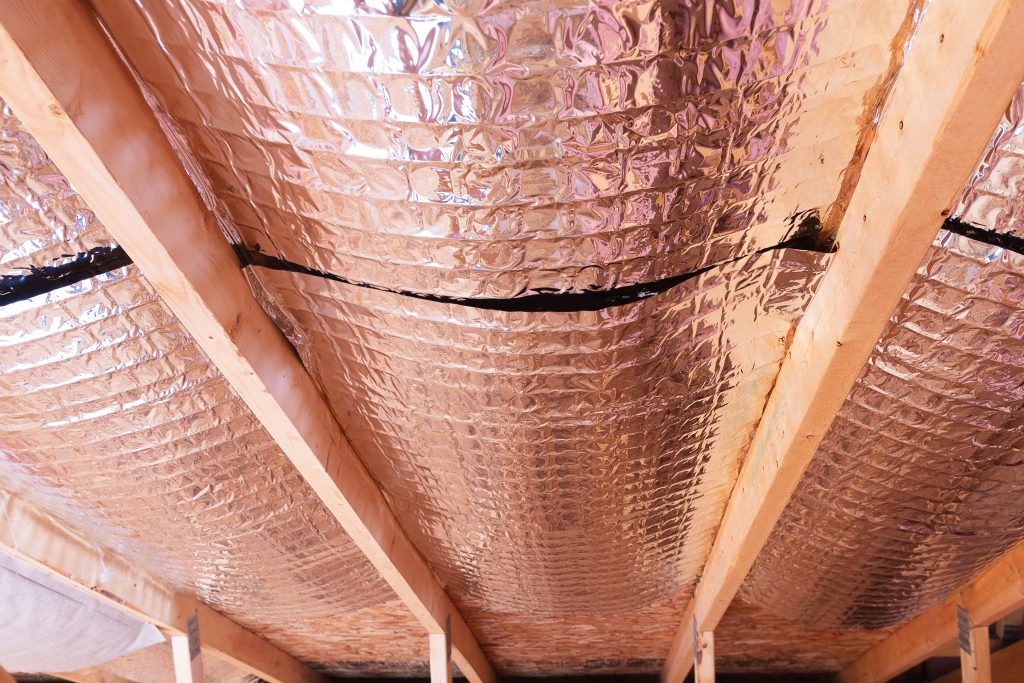
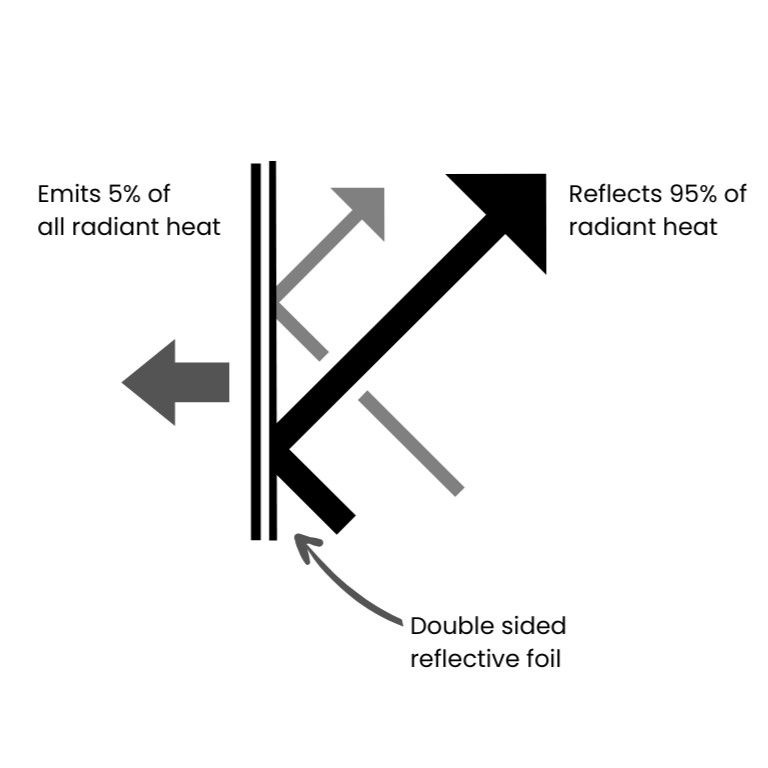
2. Bulk Insulation
Bulk insulation combats conductive and convective heat gain and loss.
This works on the principle of using a bulky, light weight, material to capture still air – a very poor conductor of heat – and harness it to reduce heat loss from inside a home during winter and heat gain during summer.
Typically bulk insulation includes glass fibre or polyester batts or rolls or a loose fill such as cellulose fibre.
Bulk insulation has an ‘R’ value based on the thickness and density of the material. It can be tested in a laboratory to check the rated ‘R’ value.
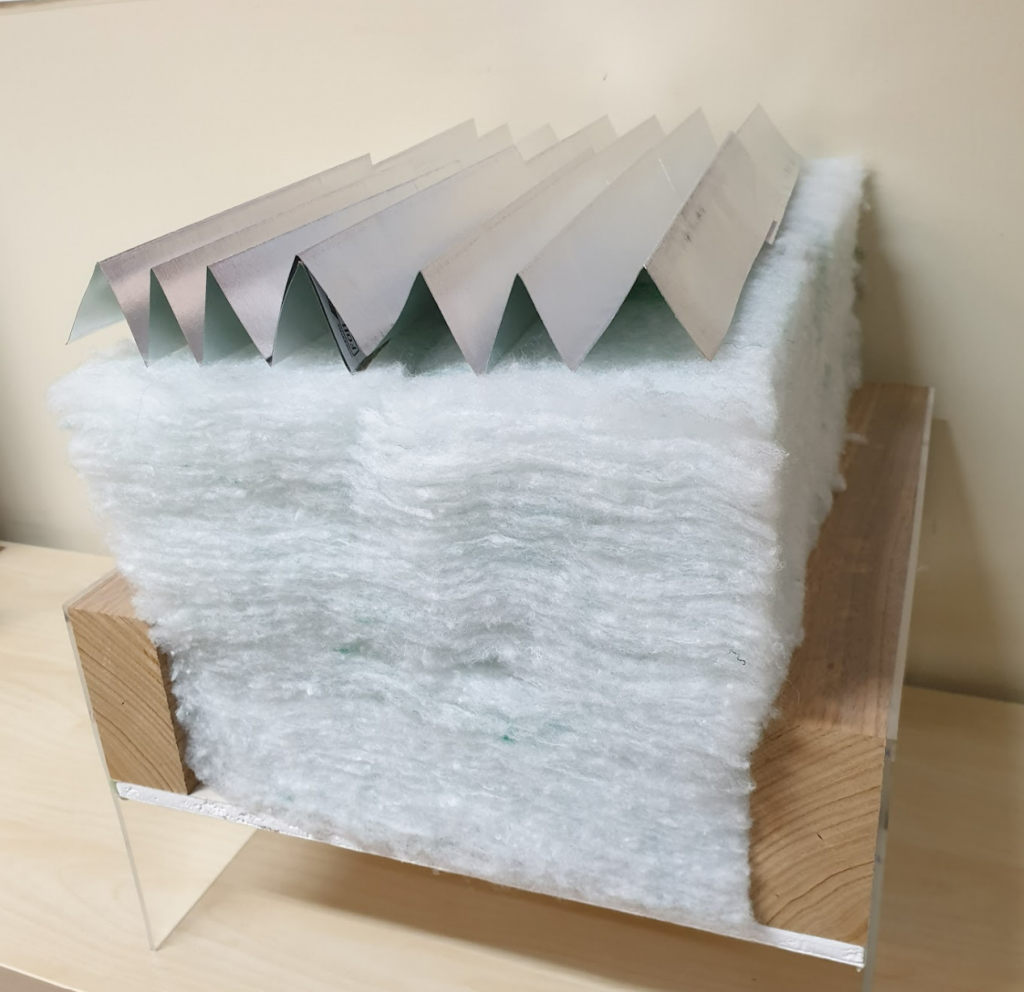
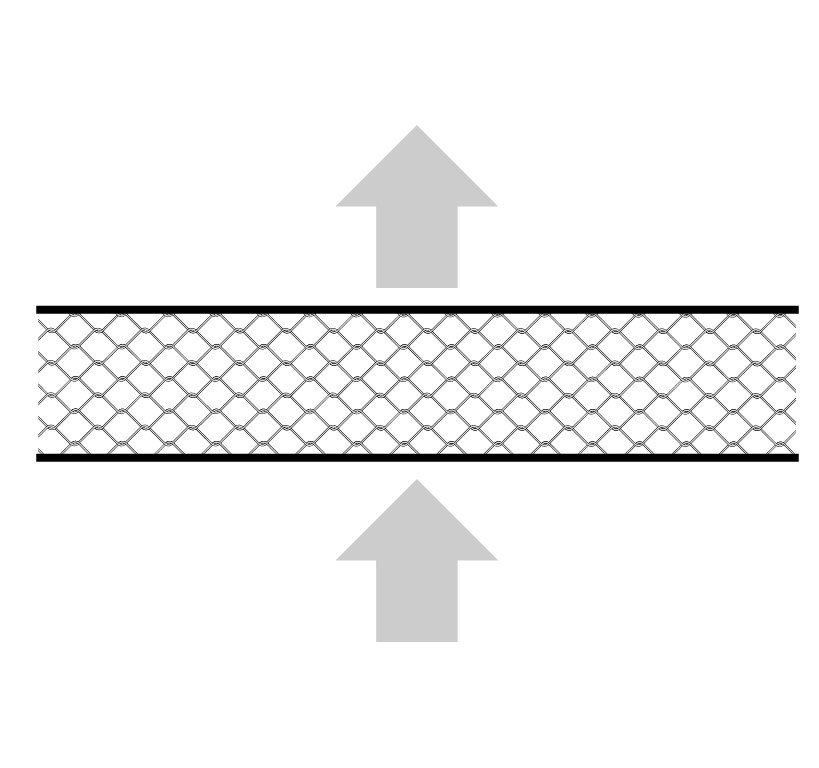
3. Composite Insulation
A combination of both of the above types of insulation to maximise their respective strengths while minimising size.
Products such as ‘builder blanket’ (a combination of reflective foil bonded to a glass fibre roll) and ‘foil face styrene board’ are good examples of composite insulation.
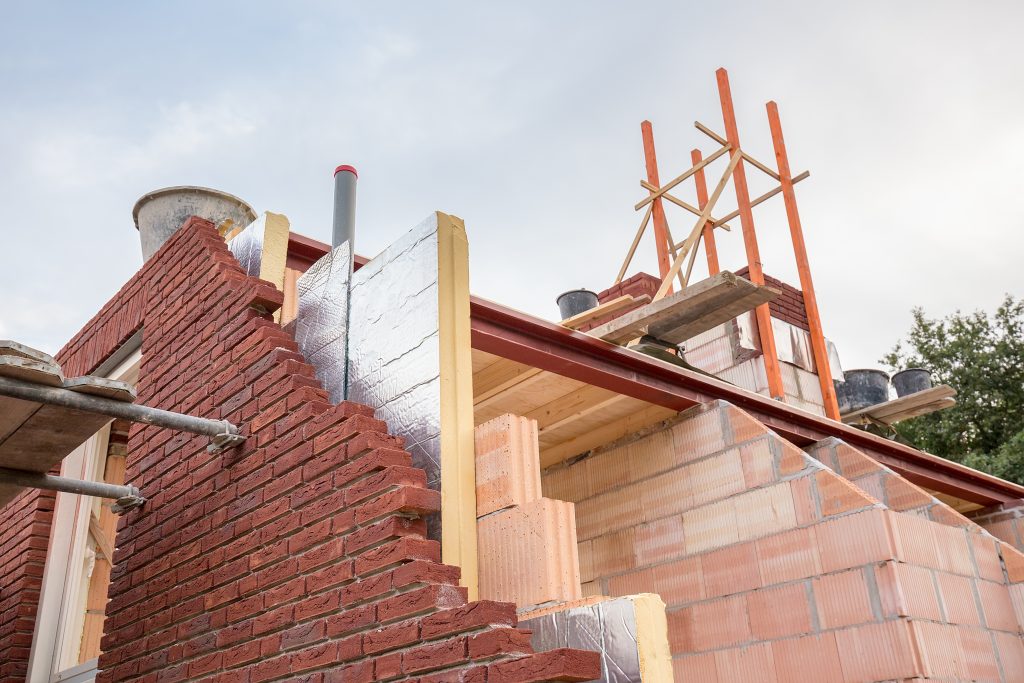
What Insulation Materials Can I Choose From?
1. Reflective Insulation
Aluminium faced paper, usually in rolls.
2. Bulk Insulation
- glass fibre (or fibre glass) in batts and rolls (often made from recycled materials)
- sheep’s wool – in batts and loose fill
- cellulose fibre – loose fill (often made from recycled paper fibres)
- polyester – in batts and rolls (often made from recycled materials)
- polystyrene – expanded (EPS) or extruded (XPS) – in rigid boards
- polyisocyanurate (PIR) – in rigid boards
- polyurethane (PUR) – in rigid boards.
Ref: Your Home Technical Manual 6th edition
3. Composite Insulation
Composite insulation combines bulk and reflective insulation. Examples include foil-faced boards, reflective foil-faced blankets and foil-backed batts.
The orientation of the foil needs careful consideration to ensure it is most effective and does not add to condensation risk. Reflective foil insulation should be on the warm side of any building system. Generally, in cooler climates, this means placing the foil on the inner side of the bulk insulation (foil facing inwards), with an air gap between the foil and the ceiling material (for example plasterboard).
Ref: Your Home Technical Manual 6th edition
Where is Insulation Used?
Put simply, it’s used in any part of the building fabric coming into contact with external temperatures.
Once again, the SEAV and Your Home Technical Manual illustrate the areas where an uninsulated home loses heat in winter and gains it in summer.
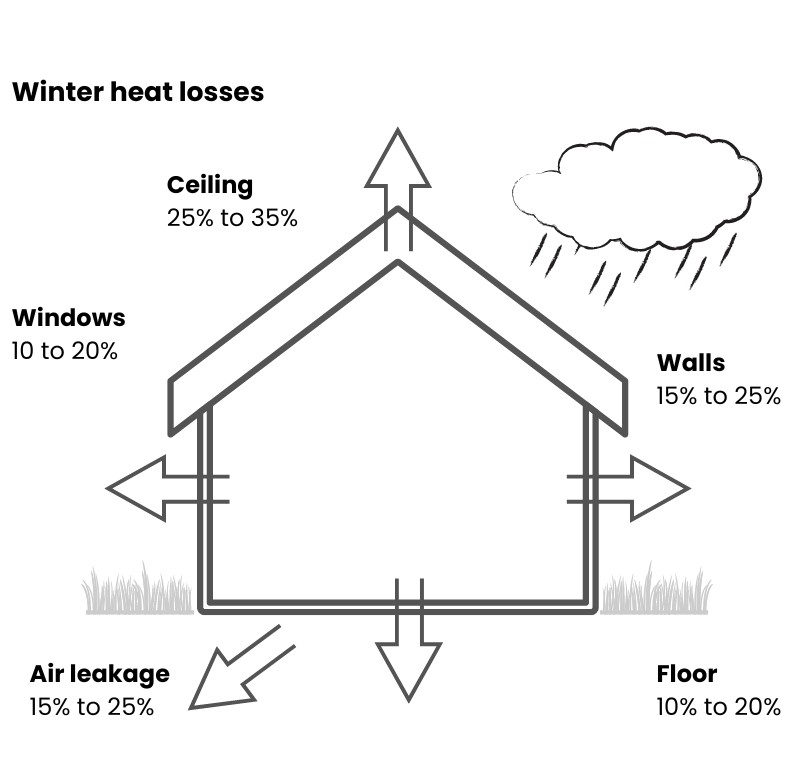
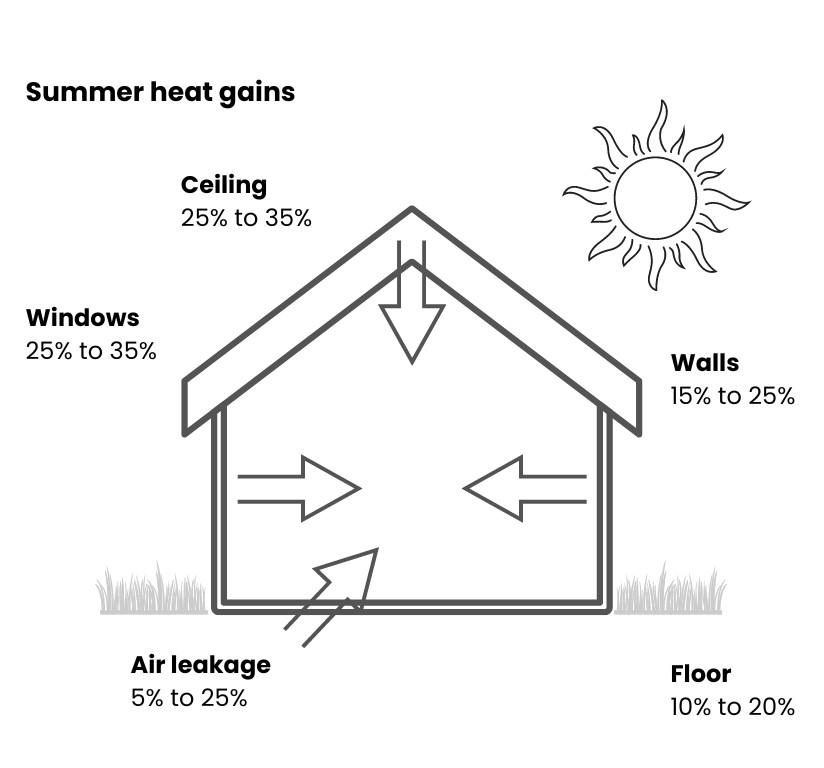
Plainly, irrespective of season, roofs and ceilings are the principal offenders, closely followed by walls and windows:
- Roof, attic or ceiling insulation – if you have a pitched roof, adding reflective insulation under the roof covering will reduce summer heat gain. Adding bulk insulation to the ceiling / attic will lessen heat loss during cold weather. For further information, see this video.
- Wall insulation – not only does wall insulation reduce heat loss and heat gain, it also diminishes outside noise and provides a degree of fire protection. For further information, see this video.
- Underfloor insulation – insulating under suspended timber or steel floors helps keep warm air inside the home during winter and cool air inside during summer. For further information, see this and this video
Although not mentioned in the graphic and easily overlooked, ecoMaster, with its 20 years of practical experience of energy audits and energy efficiency upgrades, would also recommend the insulation of hot water heaters and pipes. For further information, see this video.
Is Insulation Enough for My Home to be Energy Efficient?
No – you need to draught proof your home to maximise the benefits of insulation. You also need to ensure that your windows and doors are as energy and thermally efficient as possible.
Although floors rank a not too distant third, look at the percentage losses and gains for air leakage.
Draught stopping seems far less obviously effective than any form of insulation but, when done well and with high quality products, the investment is modest and the improvement is tangible.Here is an excellent explainer on how to Draught Proof Your Home Like a Pro.
People Also Ask:
⇒ Where is Insulation Applied?
Insulation is applied anywhere on the external fabric of a building to reduce winter heat loss and summer heat gain. Specifically insulation is used in roofs / ceilings, external walls and underneath wooden or steel floors. Insulation is increasingly used in internal walls as a means to reduce noise transfer from room to room.
⇒ Where is Insulation Needed the Most?
According to the SEAV, most winter heat loss and summer heat gain is through the roof or ceiling, closely followed by the external walls and lastly, through the floor.
⇒ What is Used for Insulation?
Reflective Insulation:
- aluminium foil on building paper
Bulk Insulation:
- glass fibre – (or fibreglass) in batts and rolls (often made from recycled materials)
- wool – in batts and loose fill
- cellulose fibre – loose fill (often made from recycled paper fibres)
- polyester – in batts and rolls (often made from recycled materials)
- polystyrene – expanded (EPS) or extruded (XPS) – in rigid boards
- polyisocyanurate (PIR) – in rigid boards
- polyurethane (PUR) – in rigid boards.
Composite Insulation:
- a blend of the above materials
⇒ Why is Insulation Used in Buildings?
To reduce winter heat loss and summer heat gain. In doing so, the temperature inside becomes more comfortable and the cost of managing any extremes much more affordable.
⇒ How Do I Choose the Right Insulation for My Home?
ecoMaster, an independent Australian business has been testing, researching, refining and installing insulation for over two decades. They have produced an excellent explainer called the Beginners Guide to Insulation. You can download it here.
⇒ Can Insulation Be Installed After a Home is Built?
Yes, insulation can be installed after a home is built. It will require more time and effort than installing insulation during construction, but it is possible. The terms that describes installation of insulation after a home has been built it called “Retrofitting”.
⇒ Can Roof Insulation be Installed After A Home Has Been Constructed?
Yes wall insulation can be installed after a home has been built. There are three ways:
- Retrofit wall insulation can be pumped in using specialist pumps and materials
- Plasterboard wall linings can be removed internally and insulating can be installed from inside your home
- External wall cladding can be removed and insulation installed from outside
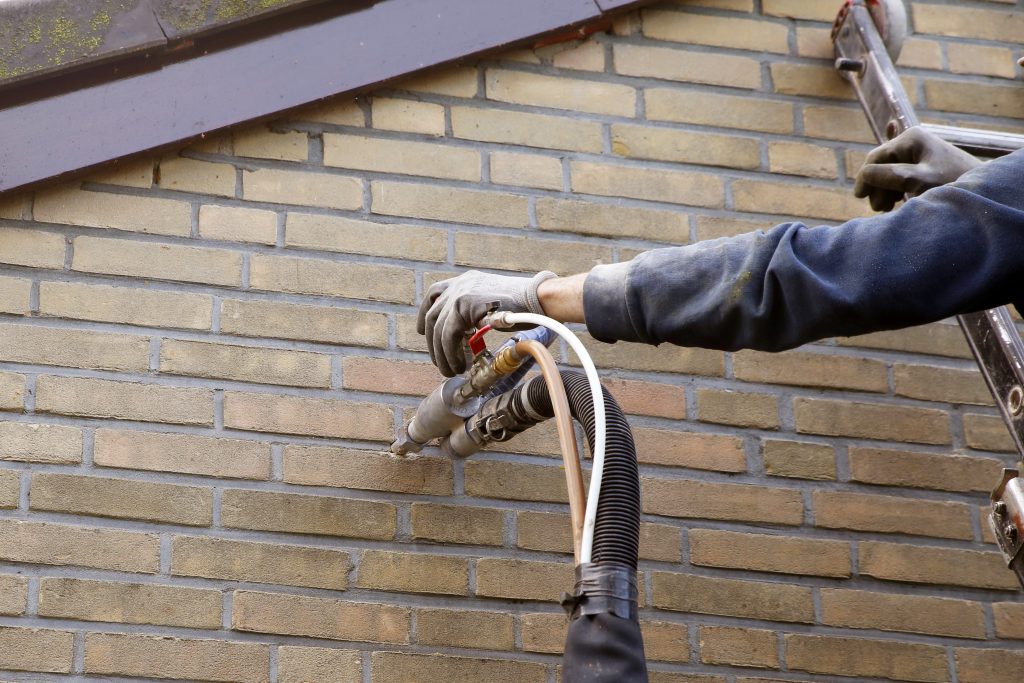
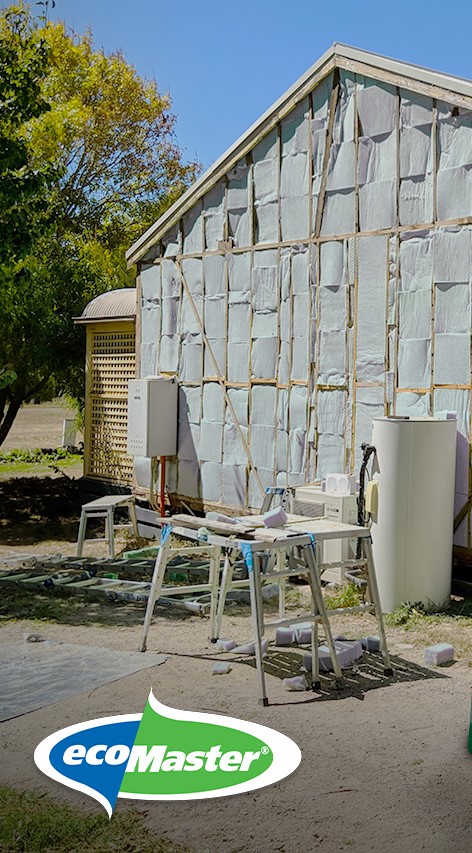
⇒ Can Underfloor Insulation be Installed After a Home Has Been Built?
Yes underfloor insulation can be installed after a home has been built.
What’s Next?
We hope this article has helped explain the basics around insulation which can be installed during construction phase, or retrofitting after a home has been built. Installing the appropriate level of insulation is a major step on your energy and thermal efficiency retrofit journey to make your home more comfortable all year round, reduce your costs and carbon emissions.
Next, explore the World of Draught Proofing.
If you found this article helpful, then please subscribe to our YouTube Channel. You’ll find many more helpful “How To” videos there. You can also follow us on Facebook and Instagram to stay in the loop.
For more great information on how to make your home more energy and thermally efficient subscribe NOW to ecoBites. ecoBites are free bite size chunks of the latest energy efficiency information making it quick and easy for you to absorb.




Recent Comments